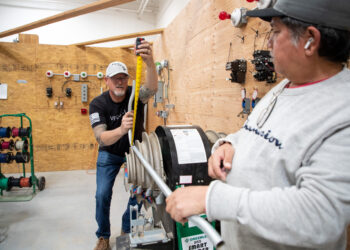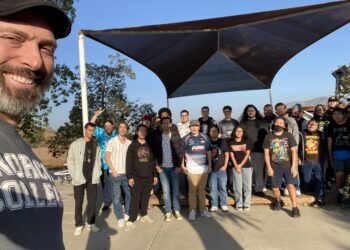At Crafton Hills College, Happiness Comes From Doing What You Love
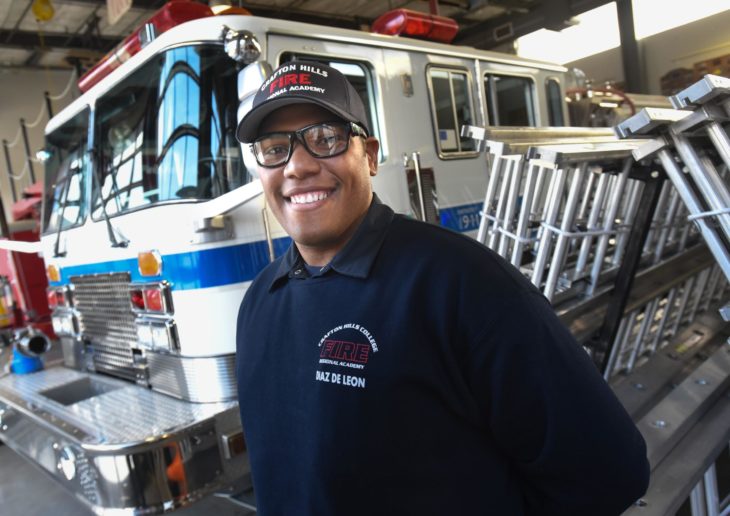
Emile Diaz de Leon, 34, is proud of what his parents achieved at the university. His mother earned her Ph.D. at the early age of 19 from the University of Cambridge in England. His father graduated from Stanford University in Northern California. For their son, they dreamed of NASA or the Jet Propulsion Laboratory.
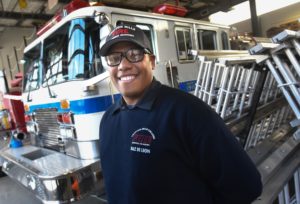 When he chose more hands-on work to support his wife and children, first in a Borax mine and then as a volunteer firefighter, like many parents in the U.S., Emile’s parents pushed back. They argued for a four year school and told him he would be wasting his potential if he pursued firefighting as a career.
When he chose more hands-on work to support his wife and children, first in a Borax mine and then as a volunteer firefighter, like many parents in the U.S., Emile’s parents pushed back. They argued for a four year school and told him he would be wasting his potential if he pursued firefighting as a career.
“They wanted me to be safe,” Emile remembered recently at the Fire Academy at Crafton Hills College in Yucaipa,. What he wanted for himself was a job that let him be outside. “I have thrill issues,” he said. “I like snowboarding and mountain biking.”
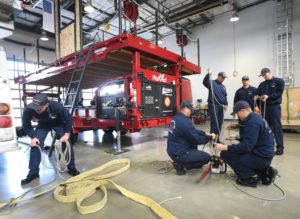 Emile said his parents have come around to his way of thinking — they support the career choice that makes him happy. Emile, who lives in Ontario, has his heart set on becoming a first responder in an emergency. He is especially drawn to swift-water rescue.
Emile said his parents have come around to his way of thinking — they support the career choice that makes him happy. Emile, who lives in Ontario, has his heart set on becoming a first responder in an emergency. He is especially drawn to swift-water rescue.
The instructors working with him say there are plenty of high-paying jobs available for graduates of the Crafton Hills Fire Academy. It has gained a reputation over 36 years as a top program with excellent equipment.
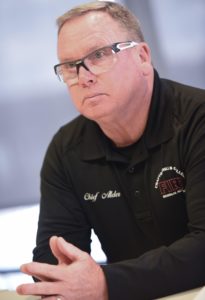 Fire Technology is just one part of the Career and Technical programs that operate at Crafton HIlls. Subjects are divided into Child Development and Education; Emergency Medical Services; Respiratory Care; Computer Information Systems and Business; and Radiologic Technology. All of the fields can benefit from state funding known as “Strong Workforce” to upgrade equipment, curriculum and job placement.
Fire Technology is just one part of the Career and Technical programs that operate at Crafton HIlls. Subjects are divided into Child Development and Education; Emergency Medical Services; Respiratory Care; Computer Information Systems and Business; and Radiologic Technology. All of the fields can benefit from state funding known as “Strong Workforce” to upgrade equipment, curriculum and job placement.
Crafton Fire Chief Mike Alder recently spent $100,000 on a “multi-purpose prop,” a large mobile trailer that allows students to practice cutting through rooftops or responding to toxic smoke or car rescues that involve removing a car door. As they work with the equipment, they repair as they go, using small hand tools to cut plywood or build a new window frame for practice with ladder rescues at heights.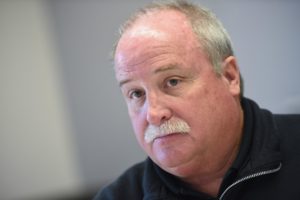
“Fire chiefs tell us that the applicants do not have experience with small hand tools,” said Rick Groff, an instructor in the programwho graduated from Crafton, worked as a firefighter, and then returned as an instructor at Crafton. Groff, Crafton Fire Chief Mike Alder, and Michelle Riggs, the director of Community Relations and Resource Development, organized an alumni association that helps them track the careers of academy graduates.
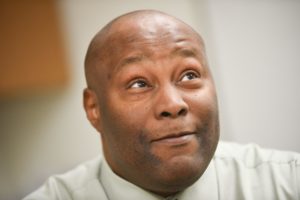 He said local state lawmakers, including Sen. Mike Morrell, Congressman Paul Cook and Assemblymember Eloise Reyes have consistently supported Strong Workforce investments at public community colleges to improve California’s economic success.
He said local state lawmakers, including Sen. Mike Morrell, Congressman Paul Cook and Assemblymember Eloise Reyes have consistently supported Strong Workforce investments at public community colleges to improve California’s economic success.
Dan Word, the interim dean for Career and Technical Education at Crafton Hills College, said access to the Strong Workforce funding — it amounts to a $200 million per year split among California’s 114 community colleges — means they can update curriculum, track success, hire faculty, hold meetings with local industry leaders, and help connect students with jobs. The fire academy curriculum needs to be updated to reflect new best practices in active shooter situations, that emergency medical responders suit up and go in, rather than waiting for the situation to resolve. A related program for the future might be how to recognize the symptom of Post Traumatic Stress Disorder.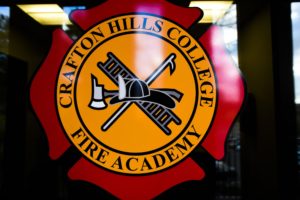
Over time, people with specific technical training earn more than people who just earn an associates degree in general studies. So extra money for vocational training should boost the local economy, Word said.
The Strong Workforce money even helps pay for an annual event to allow teenage girls to get some hands on skill building at the Fire Academy. Men still dominate the profession, but over time, women could catch up.
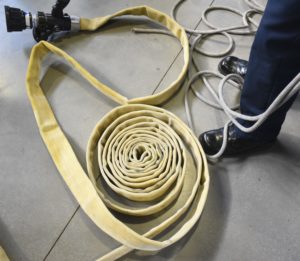 Deandra Van Houten, 25, is making her mark. She just landed a job with the San Diego City Fire Department.
Deandra Van Houten, 25, is making her mark. She just landed a job with the San Diego City Fire Department.
She had never even met a female firefighter, and never thought about it for herself until a friend challenged her to to check it out.
“I looked into it almost as a joke, so I could tell her that I did it,” she admitted. “But I absolutely fell in love with it. Everything I have been doing in my life has prepared me for this career.”
She said she learned about teamwork as a water polo player in Huntington Beach and at the University of Redlands. She coached at Redlands East Valley and even worked on her teaching credential. She doesn’t regret any of it.
“It was life experience, dedication, time management, and team work,” she said. “All of those qualities will help me as a firefighter. And I don’t think I could have survived the fire academy without learning those things first.”
She was proud to have been selected by her peers as Academy Leader, only the second woman in the program’s history to be selected for that top spot.
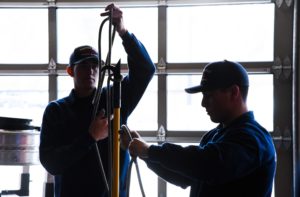 While she is not afraid of the 24 hour shifts typical in firefighting, she understands why the prospect keeps some women from the career. “It all comes down to your family and whether you have a supportive spouse,” she said. Van Houten does not have children.
While she is not afraid of the 24 hour shifts typical in firefighting, she understands why the prospect keeps some women from the career. “It all comes down to your family and whether you have a supportive spouse,” she said. Van Houten does not have children.
Emile Diaz de Leon said he has already checked out his career choice with his wife, Amanda. She is 100 percent supportive of what will require long hours for him. They have children who are 10, 8 and 5.
And if his children choose a hands on vocation rather than a four year college? He said he has learned from his own experience to be absolutely supportive.
He said they need to work at what they love.
All photos by Kurt Miller.


 When he chose more hands-on work to support his wife and children, first in a Borax mine and then as a volunteer firefighter, like many parents in the U.S., Emile’s parents pushed back. They argued for a four year school and told him he would be wasting his potential if he pursued firefighting as a career.
When he chose more hands-on work to support his wife and children, first in a Borax mine and then as a volunteer firefighter, like many parents in the U.S., Emile’s parents pushed back. They argued for a four year school and told him he would be wasting his potential if he pursued firefighting as a career. Emile said his parents have come around to his way of thinking — they support the career choice that makes him happy. Emile, who lives in Ontario, has his heart set on becoming a first responder in an emergency. He is especially drawn to swift-water rescue.
Emile said his parents have come around to his way of thinking — they support the career choice that makes him happy. Emile, who lives in Ontario, has his heart set on becoming a first responder in an emergency. He is especially drawn to swift-water rescue. Fire Technology is just one part of the Career and Technical programs that operate at Crafton HIlls. Subjects are divided into Child Development and Education; Emergency Medical Services; Respiratory Care; Computer Information Systems and Business; and Radiologic Technology. All of the fields can benefit from state funding known as “Strong Workforce” to upgrade equipment, curriculum and job placement.
Fire Technology is just one part of the Career and Technical programs that operate at Crafton HIlls. Subjects are divided into Child Development and Education; Emergency Medical Services; Respiratory Care; Computer Information Systems and Business; and Radiologic Technology. All of the fields can benefit from state funding known as “Strong Workforce” to upgrade equipment, curriculum and job placement.
 He said local state lawmakers, including Sen. Mike Morrell, Congressman Paul Cook and Assemblymember Eloise Reyes have consistently supported Strong Workforce investments at public community colleges to improve California’s economic success.
He said local state lawmakers, including Sen. Mike Morrell, Congressman Paul Cook and Assemblymember Eloise Reyes have consistently supported Strong Workforce investments at public community colleges to improve California’s economic success.
 Deandra Van Houten, 25, is making her mark. She just landed a job with the San Diego City Fire Department.
Deandra Van Houten, 25, is making her mark. She just landed a job with the San Diego City Fire Department.  While she is not afraid of the 24 hour shifts typical in firefighting, she understands why the prospect keeps some women from the career. “It all comes down to your family and whether you have a supportive spouse,” she said. Van Houten does not have children.
While she is not afraid of the 24 hour shifts typical in firefighting, she understands why the prospect keeps some women from the career. “It all comes down to your family and whether you have a supportive spouse,” she said. Van Houten does not have children. 